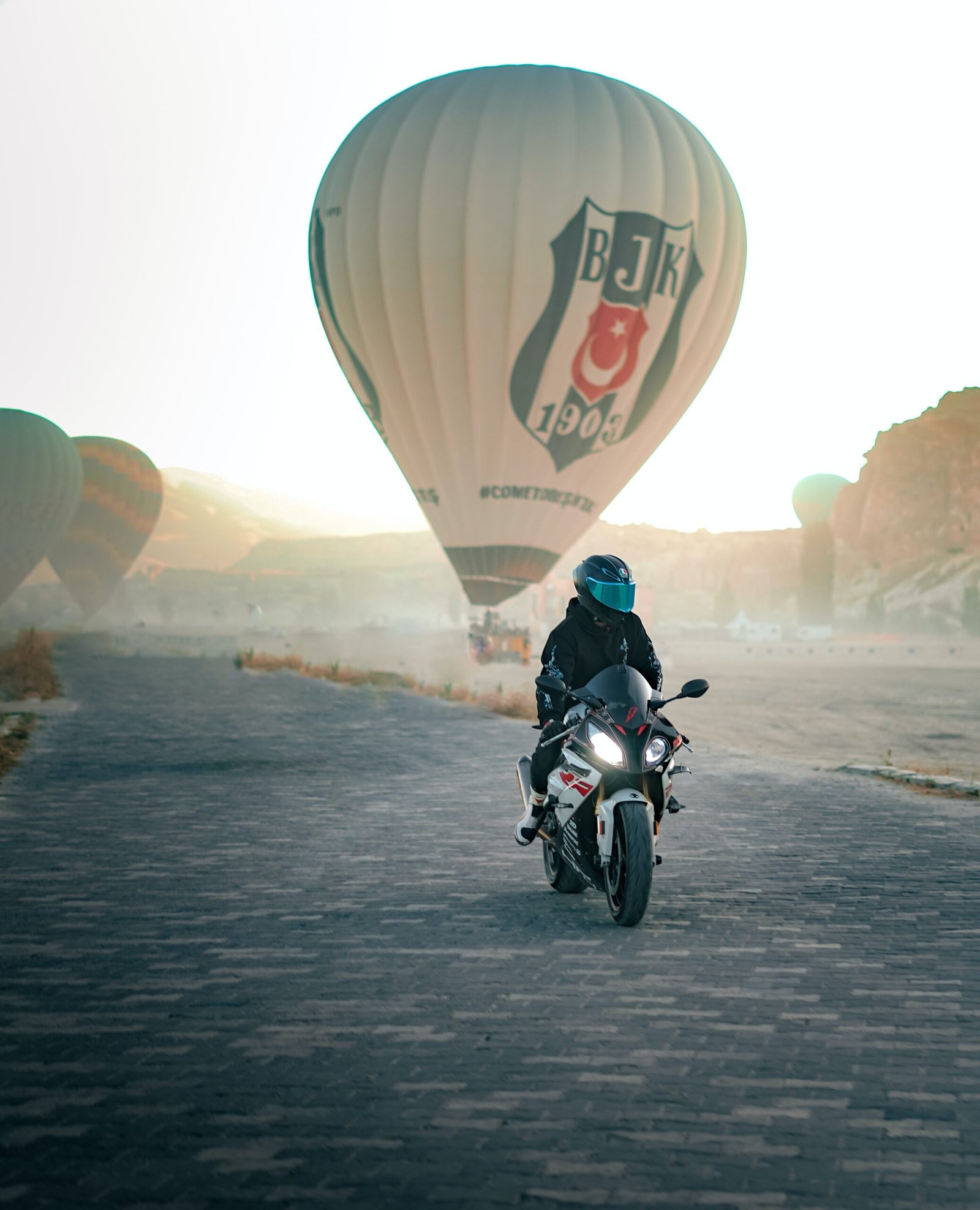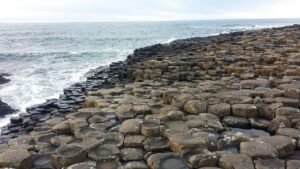
If you’re dreaming of exploring rolling green landscapes dotted with ancient castles and cozy pubs, then look no further than the Ultimate Guide to Traveling in Ireland. This comprehensive guide is your go-to resource for everything you need to know before embarking on your Irish adventure. From insider tips on must-visit attractions and hidden gems, to practical advice on transportation and local customs, this article has got you covered. So grab your passport, pack your bags, and get ready to immerse yourself in the enchanting beauty and warm hospitality of the Emerald Isle.
Getting to Ireland

By Plane
Flying is the most convenient and fastest way to reach Ireland. Several major airlines operate flights to Dublin, Shannon, Cork, and other airports across the country. If you are coming from outside of Europe, you may have a layover at a European hub airport before reaching your final destination in Ireland. Dublin Airport is the largest and busiest airport in the country, offering numerous international connections. Shannon Airport, located on the west coast, is another popular entry point, especially for visitors exploring the nearby attractions such as the Cliffs of Moher.
By Ferry
For those who prefer a more leisurely journey or wish to bring their vehicles, traveling to Ireland by ferry is a fantastic option. Several ferry companies operate routes between Ireland and the United Kingdom and continental Europe. Depending on your starting point, you can choose to arrive in Dublin, Rosslare, or other coastal towns. Ferries provide an excellent opportunity to admire Ireland’s stunning coastline and enjoy onboard amenities such as restaurants, shops, and entertainment.
Visa Requirements
Do I need a Visa?
Whether or not you need a visa to enter Ireland depends on your nationality. Citizens of the European Union (EU) and the European Economic Area (EEA) do not require a visa to visit Ireland. Additionally, citizens of certain countries, including the United States, Canada, Australia, New Zealand, and many others, are visa-exempt for short stays. However, it is always advisable to check the latest visa requirements for your specific nationality and travel plans before departure.
Visa Exemptions
As mentioned, many nationalities are exempt from needing a visa to visit Ireland for tourism or short business trips (less than 90 days). These visa-exempt travelers can simply present a valid passport at the Irish border for entry. However, it’s important to note that you may be asked to provide evidence of sufficient funds, return or onward travel arrangements, and health insurance coverage. It is always recommended to carry these documents with you when traveling to Ireland.
Applying for a Visa
If you are a national of a country that requires a visa to enter Ireland or planning an extended stay for reasons such as work or study, you will need to apply for a visa in advance. The visa application process typically involves completing an online form, providing supporting documentation, and attending an interview at an Irish embassy or consulate. It is essential to apply well in advance of your intended travel dates, as the processing time for visa applications can vary. For detailed and up-to-date information on the visa application process, it is best to consult the official website of the Irish Naturalization and Immigration Service (INIS).
When to Visit
Weather and Climate
Ireland’s weather is known for its unpredictability and changeability, with mild summers, cool winters, and frequent rainfall throughout the year. The country’s temperate maritime climate is influenced by the Gulf Stream, which brings warm air to the west coast. The average temperature in summer ranges from 15 to 20 degrees Celsius (59 to 68 degrees Fahrenheit), while winter temperatures typically range from 5 to 8 degrees Celsius (41 to 46 degrees Fahrenheit). It’s advisable to pack layers and waterproof clothing regardless of the season to be prepared for sudden changes in weather.
Peak and Off-Peak Seasons
Ireland experiences a peak tourist season during the summer months of July and August when the weather is relatively warmer and schools are on summer break. During this time, popular attractions can be crowded, and accommodation prices tend to be higher. If you prefer to avoid the crowds and enjoy more affordable rates, consider visiting during the shoulder seasons of spring (April to May) and autumn (September to October). These months offer pleasant weather, beautiful landscapes, and a more relaxed atmosphere.
Festivals and Events
Ireland is renowned for its lively festivals and events, many of which celebrate the country’s rich cultural heritage. From traditional music and dance festivals to literary and film festivals, there is always something happening throughout the year. St. Patrick’s Day, celebrated on March 17th, is perhaps the most famous Irish festival, with parades, music performances, and cultural festivities taking place nationwide. Other notable events include the Galway International Arts Festival in July, the Dublin Fringe Festival in September, and the Cork Jazz Festival in October. Be sure to check the local event calendars to see what’s happening during your visit.
Currency and Money
Currency in Ireland
The official currency of Ireland is the Euro (€). It is recommended to have some cash in Euros for small purchases, especially in rural areas where card payment options may be limited. Currency exchange services can be found at international airports, major banks, and currency exchange offices throughout the country. It is advisable to compare exchange rates and fees to ensure you get the best value for your money.
Credit Cards and ATMs
Credit cards are widely accepted in most hotels, restaurants, and shops, especially in urban areas and popular tourist destinations. Visa and Mastercard are the most commonly accepted cards, followed by American Express and Diners Club. It’s always wise to inform your bank or credit card provider of your travel plans to avoid any unexpected issues with card usage. ATMs are readily available and provide a convenient way to withdraw cash. However, be mindful of any potential transaction fees imposed by your bank.
Tipping Etiquette
Tipping in Ireland is discretionary and not as commonplace as it may be in some other countries. In restaurants and bars, it is common to leave a small tip if you received good service, usually rounding up the bill or leaving around 10% of the total. Tipping at hotels is also discretionary, with a small amount left for housekeeping staff being appreciated. There is no obligation to tip taxi drivers, but rounding up the fare is a courteous gesture. Overall, tipping is a personal choice, and it is important to remember that service charges are often already included in hotel and restaurant bills.
Transportation in Ireland
Renting a Car
Renting a car is a popular and practical way to explore Ireland, especially if you plan to venture beyond major cities and tourist hubs. Ireland has an extensive network of well-maintained roads, making it relatively easy to navigate. Driving is on the left side of the road, and the speed limits are in kilometers per hour. You will need a valid driver’s license and must be at least 21 years old (although some rental companies may require drivers to be 23 or older). It’s essential to familiarize yourself with local traffic regulations and be cautious in rural areas where narrow and winding roads are common.
Public Transportation
Ireland has an efficient and well-connected public transportation system, making it easy to get around without a car. The national bus company, Bus Éireann, operates extensive routes throughout the country, including major cities, towns, and rural areas. The train network, operated by Irish Rail, connects major cities and towns, offering comfortable and scenic journeys. Both bus and train tickets can be purchased online, at stations, or on board (with cash). For shorter journeys within cities, public buses and trams (Luas) are available, and the fares can be paid using contactless payment cards or exact cash.
Taxis and Ride-Sharing
Taxis are readily available in urban areas and can be hailed from designated taxi ranks or booked in advance. The fares are metered, and additional charges may apply for late-night travels or excess luggage. In recent years, ride-sharing services such as Uber have also become popular in Ireland, providing an alternative transportation option, especially in major cities. These services are accessed through smartphone apps, and fares are typically lower compared to traditional taxis.
Bicycles
Cycling is a fantastic way to explore Ireland’s scenic landscapes and charming towns. Many cities and towns have designated cycling lanes and bike-friendly routes. If you prefer to rent a bicycle, numerous rental shops offer a range of options, including traditional bicycles, electric bikes, and mountain bikes. It’s important to familiarize yourself with local cycling laws, wear a helmet, and follow traffic rules for your safety. Additionally, consider the weather conditions and pack appropriate clothing and equipment, especially for longer cycling trips.
Accommodation Options
Hotels
Ireland offers a wide range of hotels to suit every budget and preference. From luxurious five-star establishments to cozy boutique hotels and well-known international chains, there is plenty of choice. Hotels typically provide comfortable guest rooms, en-suite bathrooms, and amenities such as on-site restaurants, bars, and leisure facilities. Many hotels also offer complimentary Wi-Fi, parking, and concierge services. It’s advisable to book accommodations in advance, especially during peak travel seasons or when attending popular events.

Bed and Breakfasts
Bed and Breakfasts (B&Bs) are a quintessential accommodation option in Ireland, providing a warm and welcoming atmosphere combined with personal hospitality. These establishments are usually family-owned and offer comfortable rooms with breakfast included in the price. B&Bs are particularly popular in rural areas, allowing travelers to experience Irish countryside living and receive personalized recommendations from their hosts. Staying at a B&B offers an excellent opportunity to engage with local culture and gain insights into the surrounding area’s hidden gems.
Guesthouses
Guesthouses in Ireland are similar to B&Bs but often offer a slightly larger scale of operations and additional facilities. Guesthouses are typically privately owned and managed, providing a cozy and homely atmosphere. The rooms are well-maintained and equipped with all the necessary amenities. Some guesthouses may offer on-site dining options, laundry services, and communal spaces for guests to relax and socialize. Staying at a guesthouse often provides a more personal and intimate experience compared to larger hotels.
Hostels
Hostels are a popular choice among budget-conscious travelers and those looking to meet fellow adventurers. Ireland has a variety of hostels, ranging from large, modern facilities to smaller, more intimate establishments. Hostels offer shared dormitory-style rooms or private rooms at more affordable rates than hotels and guesthouses. Many hostels feature communal kitchens, social areas, and organized activities or events. Staying in a hostel can provide an opportunity to connect with like-minded travelers, share experiences, and create lasting memories.
Popular Destinations
Dublin
Dublin, the capital city of Ireland, is a vibrant and cosmopolitan destination that seamlessly blends history, culture, and modernity. Explore the cobblestone streets of Temple Bar, visit the iconic Trinity College, and marvel at the imposing Dublin Castle. Immerse yourself in literary history at the Dublin Writers Museum or pay a visit to the Guinness Storehouse for a taste of Ireland’s famous stout. Don’t miss the chance to stroll along the banks of the River Liffey and enjoy the city’s lively atmosphere in the numerous pubs, restaurants, and shops.
Cork
Situated in the scenic south of Ireland, Cork City offers a charming mix of rich heritage, lively arts, and culinary delights. Discover the iconic English Market, a food lover’s paradise, or explore the narrow alleyways of the historic Shandon district. Don’t forget to kiss the Blarney Stone at Blarney Castle and Gardens, said to bestow the “gift of gab” upon anyone who dares. For nature enthusiasts, a visit to the ruggedly beautiful Beara Peninsula or a boat trip to the nearby Fota Wildlife Park is a must.
Galway
Known for its bohemian vibe and vibrant arts scene, Galway is a city that never fails to captivate visitors. The pedestrianized streets of the city center are adorned with colorful shopfronts, traditional pubs, and lively street performers. Immerse yourself in the enchanting atmosphere of the Latin Quarter, explore the medieval Galway City Museum, or catch a performance at the renowned Druid Theatre Company. Galway also serves as an ideal base for exploring the stunning landscapes of Connemara and the scenic Aran Islands.
Belfast
Located in Northern Ireland, Belfast offers a captivating blend of history, culture, and thriving urban life. Discover the city’s troubled past at the Titanic Belfast museum and learn about the ill-fated voyage of the Titanic. Marvel at the stunning architecture of Belfast City Hall or take a stroll along the vibrant streets of the Cathedral Quarter, known for its lively pubs and music scene. For a deeper understanding of Northern Ireland’s history, a visit to the politically significant murals in the Falls and Shankill neighborhoods is highly recommended.
Killarney
Nestled amidst the splendor of County Kerry’s landscapes, Killarney is a charming town that serves as the gateway to the enchanting Killarney National Park. Explore the park’s picturesque lakes, mountains, and woodlands on foot, by bike, or by taking a traditional jaunting car ride. Don’t miss a visit to Muckross House and Gardens, a grand Victorian mansion surrounded by stunning gardens. Killarney also offers easy access to the famed Ring of Kerry, a scenic driving route that showcases the region’s most breathtaking coastal and mountain views.
Must-See Attractions

Cliffs of Moher
One of Ireland’s most iconic natural wonders, the Cliffs of Moher, draw visitors from around the world. Rising dramatically from the Atlantic Ocean, the cliffs offer breathtaking panoramic views of the rugged coastline and the crashing waves below. Take a leisurely stroll along the cliff-top pathways, soak in the awe-inspiring scenery, and keep an eye out for the diverse bird species that call these cliffs home. For an immersive experience, visit the newly renovated visitor center to learn more about the geological and cultural significance of this magnificent site.
Ring of Kerry
The Ring of Kerry is a picturesque driving route that showcases the stunning beauty of County Kerry’s landscapes. The 179-kilometer (111-mile) loop takes you through rugged mountains, sparkling lakes, charming villages, and breathtaking coastal scenery. Highlights along the route include the Gap of Dunloe, the Skellig Ring, and the charming town of Kenmare. Whether driving the route yourself or joining a guided tour, the Ring of Kerry is a must-do for nature lovers and anyone seeking to immerse themselves in Ireland’s natural wonders.
Giant’s Causeway
Located on the north coast of Northern Ireland, the Giant’s Causeway is a UNESCO World Heritage site renowned for its unique basalt columns. The result of an ancient volcanic eruption, the hexagonal-shaped columns create a surreal landscape that captures the imagination. Take a walk along the Causeway’s interlocking pathways, explore the nearby cliffs and caves, and learn about the legendary tales of giants that surround this geological marvel. The Visitor Centre offers insights into the formation of the Causeway and provides an immersive experience through interactive displays.
Blarney Castle
Blarney Castle, steeped in history and legend, is best known for its famous Blarney Stone. Legend has it that those who kiss the stone will be bestowed with the “gift of eloquence.” Climb to the top of the castle’s battlements, follow in the footsteps of medieval lords and ladies, and partake in the ritual of kissing the stone. The castle’s extensive gardens are a delight to explore, with lush landscapes, tranquil waterways, and vibrant flower beds in full bloom. Don’t miss the chance to stroll through the Poison Garden, where a collection of poisonous plants adds a touch of intrigue to the surroundings.
Titanic Belfast
Located on the site of the former Harland & Wolff shipyard, Titanic Belfast is an award-winning museum dedicated to the story of the ill-fated RMS Titanic. Discover the history of Belfast’s shipbuilding industry, learn about the construction and tragic sinking of the Titanic, and explore the interactive exhibits that bring this legendary ocean liner to life. Stand in awe of the stunning architecture that mirrors the ship’s hull, and take a moment to reflect at the Titanic Memorial Garden. Titanic Belfast offers a comprehensive and immersive experience that appeals to history enthusiasts and anyone fascinated by the Titanic’s enduring legacy.
Traditional Irish Cuisine
Irish Stew
Irish stew is a hearty and comforting dish that has been enjoyed for generations. Made with tender lamb or mutton, root vegetables such as potatoes, carrots, and onions, and seasoned with herbs and spices, Irish stew is a true taste of Ireland. The slow cooking process allows the flavors to meld together, resulting in a rich and satisfying stew that warms the soul. Whether enjoyed in a cozy countryside pub or prepared at home, Irish stew is a culinary delight that embodies the warmth and hospitality of the Irish people.
Boxty
Boxty is a traditional Irish potato pancake that is both delicious and versatile. Made from grated raw potatoes, mashed potatoes, flour, and buttermilk, boxty can be fried, baked, or boiled. It can be enjoyed as a savory side dish, served with a traditional Irish breakfast, or even filled and rolled as a main course. Boxty is a staple of Irish cuisine and a beloved comfort food that showcases the simplicity and versatility of locally sourced ingredients.
Colcannon
Colcannon is a classic Irish dish that combines creamy mashed potatoes with cabbage or kale, onions, and butter. Traditionally served alongside boiled ham or Irish bacon, colcannon is a comforting side dish that offers a delicious blend of flavors and textures. The creamy potatoes and tender greens create a harmonious balance, making colcannon a favorite accompaniment to many traditional Irish meals. Don’t miss the chance to savor this hearty dish during your visit to Ireland.
Seafood
With its extensive coastline, Ireland is renowned for its fresh and flavorful seafood. From succulent oysters and mussels to delectable smoked salmon and cod, seafood lovers are in for a treat. Enjoy a plate of fish and chips by the seaside, indulge in a seafood chowder brimming with the catch of the day, or sample the delicate flavors of Irish smoked salmon. Ireland’s coastal towns and cities offer a plethora of dining options to satisfy any seafood craving.
Irish Breakfast
The traditional Irish breakfast, also known as the “full Irish,” is a hearty and satisfying morning feast that sets you up for the day ahead. This substantial meal typically includes bacon (rashers), pork sausages, eggs, black and white pudding, grilled tomatoes, mushrooms, and fried potatoes. Baked beans and toast are also commonly served. The full Irish breakfast is a reflection of Ireland’s agricultural heritage and is perfect for those who prefer a substantial start to the day. Whether enjoyed at a cozy B&B or a bustling café, an Irish breakfast is a true culinary delight.
Local Customs and Etiquette
Greetings and Politeness
The Irish are known for their warm hospitality and friendliness. When meeting locals, a simple “hello” or “hi” accompanied by a smile is a polite way to initiate a conversation. Handshakes are usually exchanged upon meeting, and it’s customary to maintain eye contact and introduce yourself. The Irish value good manners and appreciate small gestures of politeness, so saying “please” and “thank you” is always appreciated.
Pubs and Drinking
Pubs hold a significant place in Irish culture and social life. They are not just places to drink but also serve as meeting spots, community centers, and sometimes even venues for live music sessions. When in a pub, it is customary to order drinks at the bar and wait to be served. Engaging in light conversation with other patrons or the bartender is welcomed and can be a great way to immerse yourself in the local ambiance. Remember to pace yourself and drink responsibly, as the Irish enjoy their social gatherings without overindulgence.
Driving Etiquette
If you plan on driving in Ireland, it’s essential to familiarize yourself with the local driving etiquette. Remember to drive on the left-hand side of the road and respect the speed limits, which are displayed in kilometers per hour. In rural areas, it’s common to encounter narrow and winding roads, so exercise caution and be prepared to give way to oncoming traffic. When meeting another vehicle on a narrow road, it’s customary for the driver on the wider side to reverse and allow the other vehicle to pass.
Tipping
Tipping in Ireland is discretionary and not as widespread as in some other countries. In restaurants and bars, it is customary to leave a small tip if you received good service, usually rounding up the bill or leaving around 10% of the total. Tipping at hotels is also discretionary, with a small amount left for housekeeping staff being appreciated. There is no obligation to tip taxi drivers, but rounding up the fare is a courteous gesture. Overall, tipping is a personal choice, and it is important to remember that service charges are often already included in hotel and restaurant bills.
Traditional Music Sessions
One of the highlights of visiting Ireland is experiencing a traditional music session, also known as a trad session. These informal gatherings of musicians playing traditional Irish music can be found in pubs, music venues, and even occasionally on the streets. As a listener, it’s customary to show respect and appreciation by giving the musicians your full attention and refraining from talking loudly or disrupting the performance. If you’re a musician yourself, joining in is often welcomed, but be sure to gauge the atmosphere and ask for permission before joining the session.
In conclusion, traveling to Ireland offers a wealth of experiences, from exploring lively cities to embracing the breathtaking beauty of its natural landscapes. By plane or ferry, you can easily reach this enchanting island nation. Understanding the visa requirements, knowing the best time to visit based on weather and festivals, and familiarizing yourself with the local currency and transportation options will ensure a smooth and enjoyable journey. Whether staying in hotels, B&Bs, guesthouses, or hostels, there are accommodation options to suit every preference and budget. Exploring popular destinations such as Dublin, Cork, Galway, Belfast, and Killarney allows you to immerse yourself in the vibrant culture and history of Ireland. Don’t forget to visit must-see attractions like the Cliffs of Moher, Ring of Kerry, Giant’s Causeway, Blarney Castle, and Titanic Belfast, and indulge in traditional Irish cuisine, including Irish stew, boxty, colcannon, seafood, and hearty Irish breakfasts. As you navigate Ireland, be mindful of local customs and etiquette, such as greetings, pub culture, driving etiquette, tipping, and respecting traditional music sessions. With this comprehensive guide, you are ready to embark on a memorable adventure in the Emerald Isle.





